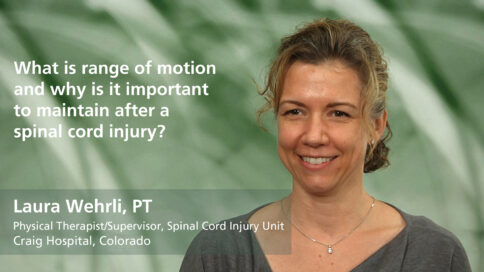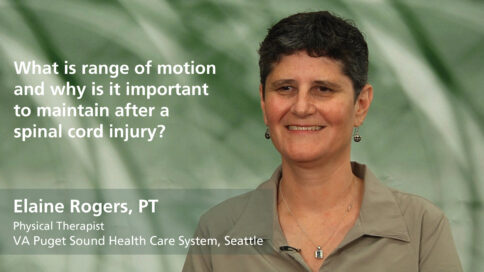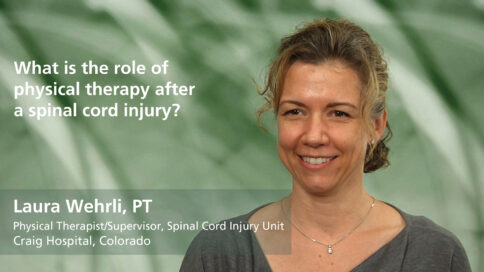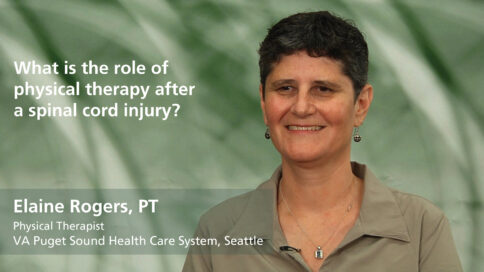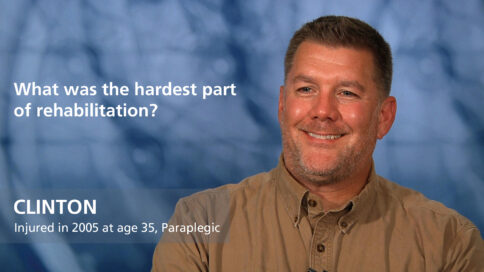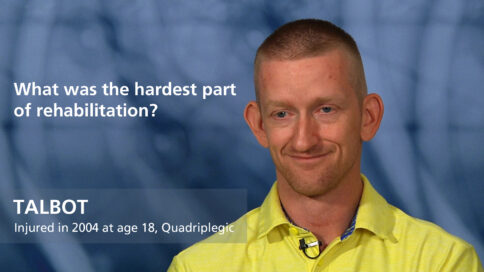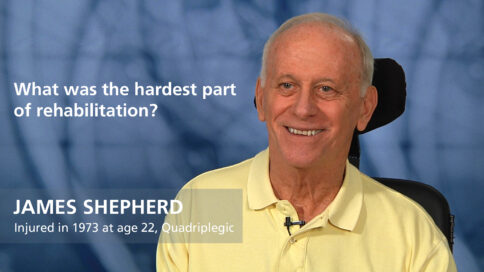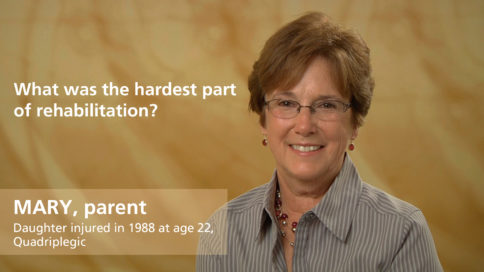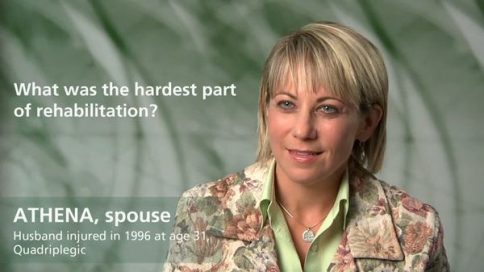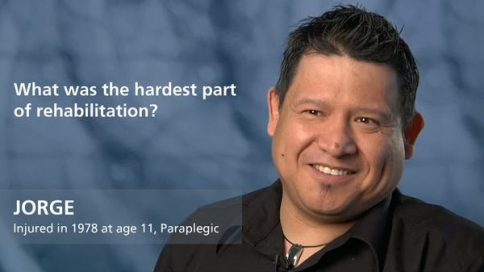What is range of motion and why is it important to maintain after a spinal cord injury? - Isa McClure, MAPT
|
|
What is range of motion and why is it important to maintain after a spinal cord injury? |
|
Isa McClure, MAPTPhysical Therapist, Kessler Institute for Rehabilitation, New Jersey |
||
| Read Bio | More Videos by Isa McClure | |
|
Share |
||
Transcript
With range of motion what we want to do is teach the family and the patient how to instruct somebody if they can’t do the range of motion independently on stretching their legs on a daily basis. It’s the same thing if you or I were going to get up in the morning and stretch, you feel better afterwards. But for someone with a spinal cord injury, it’s more important because we want to make sure that the muscles of their legs stay long, lean and flexible. Part of that is teaching the patient and the family, if the family is going to be able to help with it, the appropriate techniques in order to perform. You see in movies all the time, the very dramatic scene in the hospital where they’re going back and forth, and faster, faster and push harder. And truthfully we don’t teach that because it’s not appropriate. It’s great for a Hollywood movie, but it’s not appropriate for real life. If you do the very fast and very hard stretching it can actually make somebody’s’ spasticity worse. So we teach the appropriate sequencing, we want to keep that person’s legs long, lean and flexible, like I said, so that if they’re going to get return of movement, their legs will be ready for it. And if they’re not at this time going to get that return of movement, what we can do is prepare their body for when that time comes.
Show Less|
|
||
add
What is range of motion and why is it important to maintain after a spinal cord injury? |
||
Isa McClure, MAPTPhysical Therapist, Kessler Institute for Rehabilitation, New Jersey |
More Videos by Isa McClure | |
| Transcriptadd | share | |
With range of motion what we want to do is teach the family and the patient how to instruct somebody if they can’t do the range of motion independently on stretching their legs on a daily basis. It’s the same thing if you or I were going to get up in the morning and stretch, you feel better afterwards. But for someone with a spinal cord injury, it’s more important because we want to make sure that the muscles of their legs stay long, lean and flexible. Part of that is teaching the patient and the family, if the family is going to be able to help with it, the appropriate techniques in order to perform. You see in movies all the time, the very dramatic scene in the hospital where they’re going back and forth, and faster, faster and push harder. And truthfully we don’t teach that because it’s not appropriate. It’s great for a Hollywood movie, but it’s not appropriate for real life. If you do the very fast and very hard stretching it can actually make somebody’s’ spasticity worse. So we teach the appropriate sequencing, we want to keep that person’s legs long, lean and flexible, like I said, so that if they’re going to get return of movement, their legs will be ready for it. And if they’re not at this time going to get that return of movement, what we can do is prepare their body for when that time comes.
